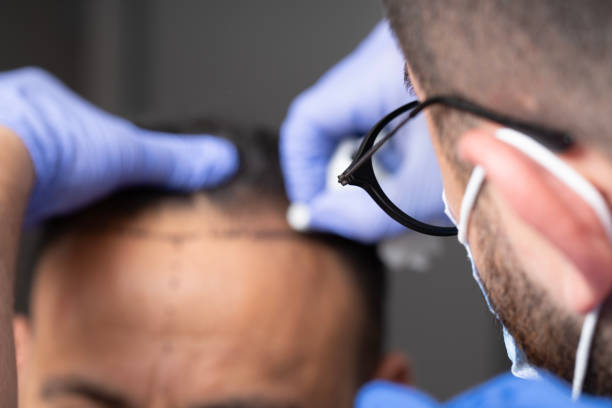The quest for a more sculpted and attractive physique has led many individuals to explore various cosmetic procedures. Among these, the Brazilian Butt Lift in Abu Dhabi has gained immense popularity due to its ability to enhance natural curves and improve body proportions. As with any surgical intervention, safety is a paramount concern for prospective patients. Today, advancements in surgical techniques, anesthesia, and patient care have significantly improved the safety profile of this popular procedure.
Understanding how safe Brazilian Butt Lift is today requires a comprehensive look at the latest developments in the field, the measures taken to ensure patient well-being, and the factors influencing the overall safety of the procedure.
Evolution of Brazilian Butt Lift Safety
Historical Perspective and Improvements
Initially, the Brazilian Butt Lift was associated with higher risks, largely due to less sophisticated techniques and limited understanding of the procedure’s complexities. Over the years, innovations in fat grafting methods, anesthesia, and patient management have revolutionized the safety standards. Today, the procedure involves meticulous planning and precision, significantly reducing potential complications.
Modern Techniques and Technologies
Modern Brazilian Butt Lift employs advanced liposuction and fat transfer techniques that minimize trauma and improve fat survival rates. Techniques such as tumescent liposuction and ultrasonic-assisted liposuction allow for safer fat harvesting. The use of sophisticated imaging and mapping tools enables surgeons to avoid critical vascular structures, reducing the likelihood of adverse events.
Role of Skilled Surgeons and Medical Facilities
Importance of Expertise
The safety of the procedure heavily depends on the surgeon’s expertise. Experienced surgeons trained specifically in fat transfer and buttock augmentation techniques are better equipped to handle complex cases and manage intraoperative challenges effectively.
Accredited Medical Facilities
Choosing a reputable, accredited medical facility ensures adherence to strict safety protocols and access to advanced surgical equipment. Such facilities maintain high standards of sterilization, anesthesia safety, and postoperative care, all of which contribute significantly to patient safety.
Preoperative Evaluation and Patient Selection
Comprehensive Medical Assessment
A thorough preoperative evaluation helps identify underlying health conditions that may affect surgical outcomes or increase risks. This includes medical history, physical examination, and necessary laboratory tests.
Realistic Expectations and Patient Readiness
Assessing patient goals and expectations is vital. Patients should be well-informed about the procedure, recovery process, and potential outcomes to ensure psychological readiness and compliance with postoperative instructions.
Advances in Anesthesia and Pain Management
Safer Anesthesia Protocols
Today, anesthesia techniques prioritize patient safety by utilizing safer agents and monitoring systems. Local anesthesia combined with sedation is often employed to reduce risks associated with general anesthesia.
Effective Pain Control
Postoperative pain management has also improved, with multimodal approaches that minimize discomfort and facilitate quicker recovery, ultimately enhancing overall safety and patient satisfaction.
Postoperative Care and Monitoring
Importance of Follow-up
Close postoperative monitoring ensures early detection and management of any complications. Patients are typically provided with detailed instructions on activity restrictions, wound care, and signs of potential issues.
Minimizing Complications
Adherence to postoperative guidelines significantly reduces risks such as infection, fat embolism, or irregularities. Regular follow-up appointments help maintain safety standards and optimize results.
Patient Education and Informed Consent
Empowering Patients
Providing comprehensive information about the procedure, risks, and expected outcomes empowers patients to make informed decisions. Clear communication fosters trust and enhances safety by setting realistic expectations.
Informed Consent Process
A thorough informed consent process ensures that patients understand all aspects of the surgery, including potential risks and benefits, which is essential for ethical and safe practice.
The Future of Safety in Brazilian Butt Lift Procedures
Innovative Techniques and Research
Ongoing research aims to further improve the safety profile of Brazilian Butt Lifts by developing less invasive techniques, better fat harvesting methods, and enhanced safety protocols.
Personalized Approaches
Tailoring procedures to individual anatomy and needs ensures better safety outcomes, reduces complications, and results in more natural-looking enhancements.
Conclusion
The safety of Brazilian Butt Lift Abu Dhabi today is the result of continuous advancements in surgical techniques, technology, and patient care. When performed by skilled professionals in accredited facilities, the procedure offers safe and satisfying results for suitable candidates. Patients are encouraged to seek thorough consultations, adhere to pre- and postoperative instructions, and maintain realistic expectations to maximize safety and satisfaction.







0 Comments